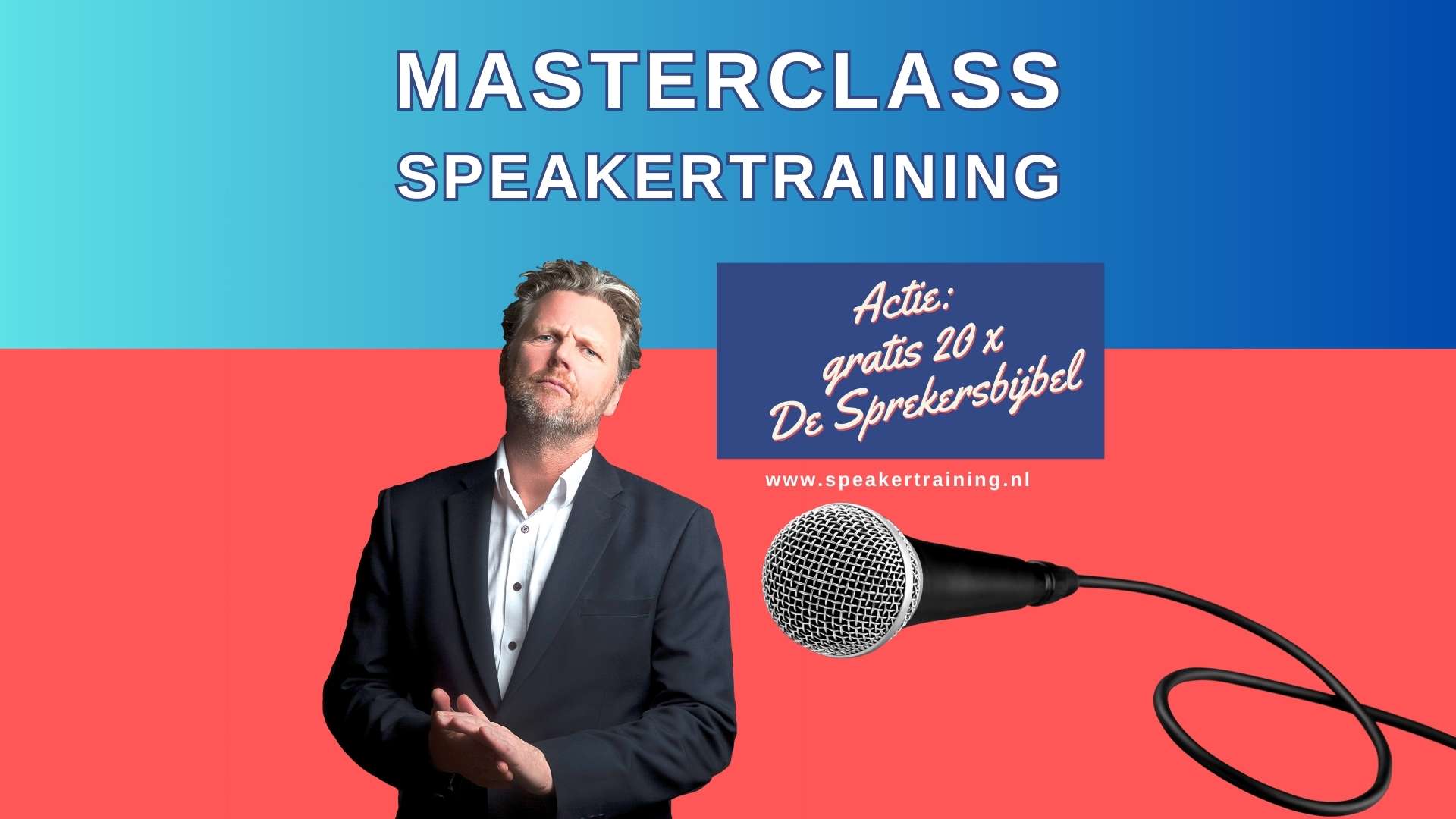
Masterclass
Speakertraining
Zet u team nog voor de zomer op scherp met deze masterclass speakertraining. Nu met speciale actie: 20 gratis x het boek De Sprekersbijbel t.w.v. 590,00 €.
Meer boeken nodig? Vraag naar de speciale aanbieding. Uw personeel kan komende zomer het boek lezen, samen met de Masterclass zullen de presentaties naar een hoger niveau gaan, wat invloed heeft op de totale bedrijfsvoering.
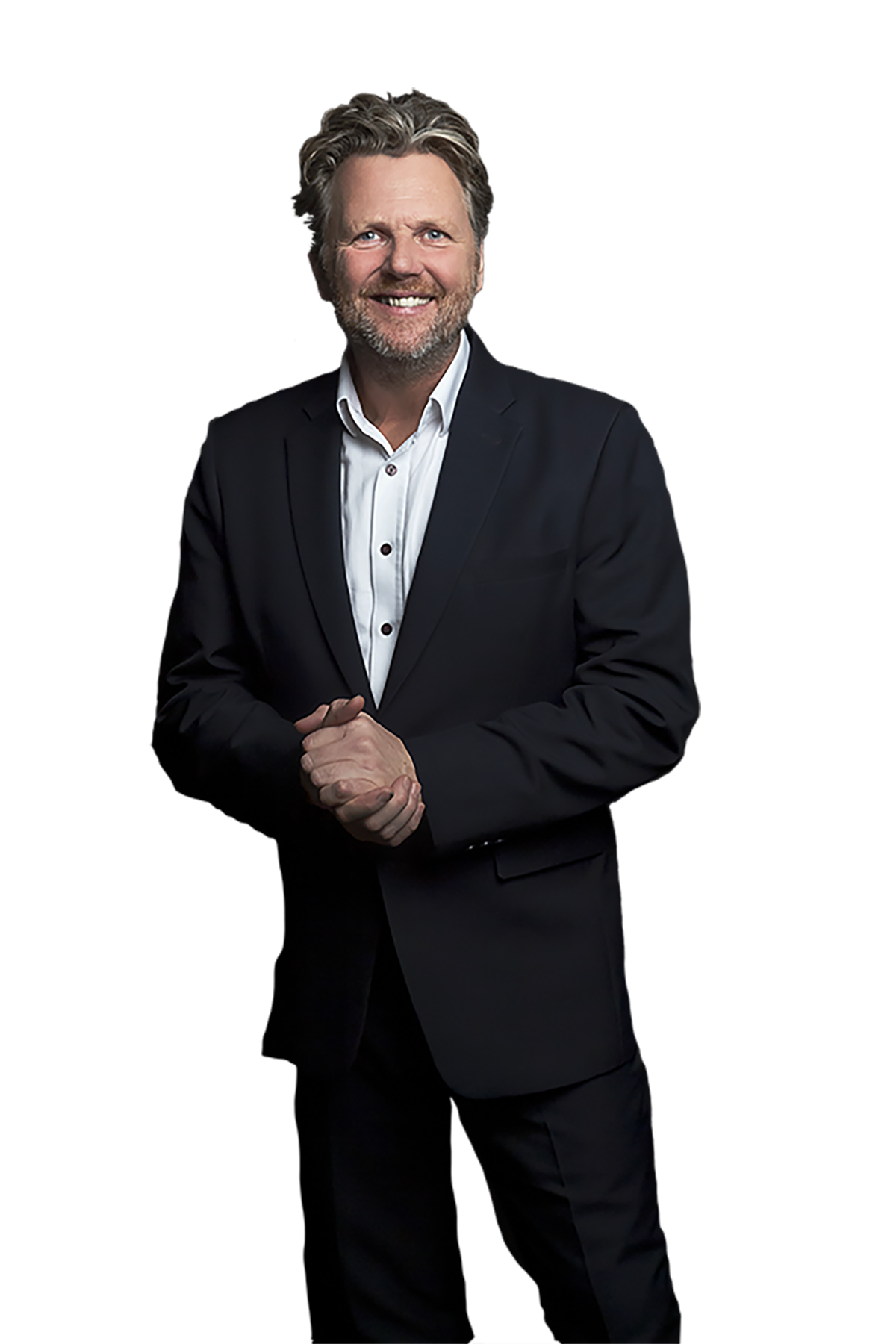
Waar gaat de Masterclass over:
De ultieme zakelijke presentatie
Of het nu een informele meeting is op de afdeling, een pitch in een vergadering of een presentatie bij een event; Hoe zorg je ervoor dat je je publiek kan raken, kan inspireren en tot actie over laat gaan? Daar gaat de Masterclass Speakertraining over. Alle aspecten komen aan bod. Met 30 jaar ervaring en meer dan 5000 shows heeft Tom genoeg praktijkervaring om uw team op scherp te zetten.
In acht heldere stappen naar de ultieme presentatie
De masterclass is bij u op de zaak
”Nu
De masterclass is van 30 tot 60 minuten
Een energieke masterclass met veel humor, interactie en praktijkvoorbeelden.
Niet iedereen hoeft een professionele spreker te zijn, maar de presentatie moet wel professioneel zijn.
bij u op de zaak, wanneer het u uitkomt
Mijn aanpak
Als u de masterclass boekt spreken we meteen een online voorgesprek af, meestal een week voor de training. Daar nemen we door hoe groot de groep is, waar op gelet moet worden en kijken we waar het kan plaats vinden en welke randzaken als beamer daarvoor nodig zijn.
Dat wil zeggen dat u ook specifiek kan aangeven welke details voor uw team belangrijk zijn. Dit kunnen we meteen in de praktijk testen naar aanleiding van voorbeelden uit de zaal.
Zoals eerder vermeld krijgt u, als u in de maand juni boekt, er 20 exemplaren van De Sprekersbijbel bij, het boek wat Tom na 25 jaar ervaring geschreven heeft. Is het team groter en wilt u voor iedereen een mooie blijvende herinnering, vraag dan naar de special actie.
Als u de training nog voor 20 juli 2023 houdt, dan kan elke deelnemer het boek van de zomer lezen. Dan zijn ze er in augustus helemaal klaar voor.

Dit zijn de acht punten die in ieder geval aan bod komen:
Zie de acroniem OCTOPUS!
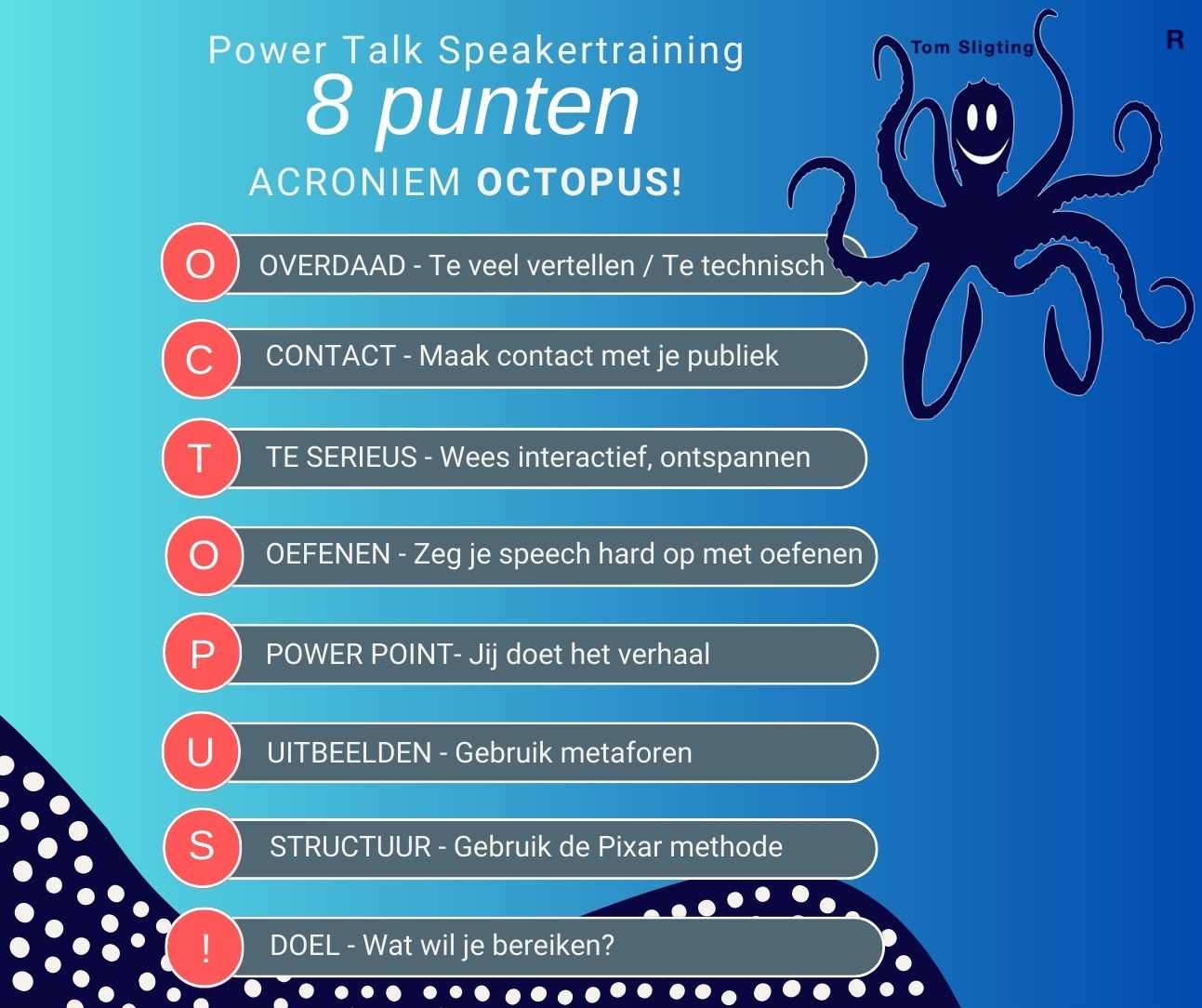
Masterclass Speakertraining
Niet iedereen hoeft een professionele spreker te zijn, maar de presentatie moet wel professioneel zijn.

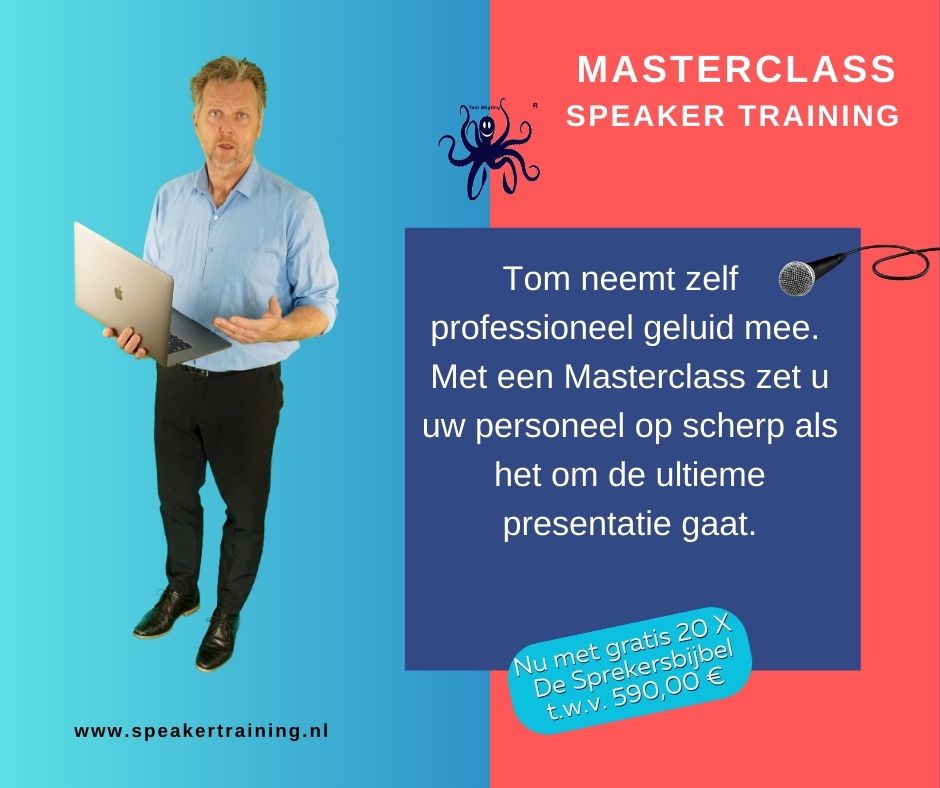
Met de Power Talk Speakerstraining kunnen uw werknemers zich meer bewust worden van hoe ze overkomen op anderen en de vaardigheden verwerven die nodig zijn om krachtige toespraken te houden die de aandacht van hun publiek vasthouden en de impact van hun boodschap vergoten.
Het gaat er eigenlijk niet om wat het kost, het gaat er om wat het opbrengt.
Laat deze Power Talk het verschil maken in uw organisatie.

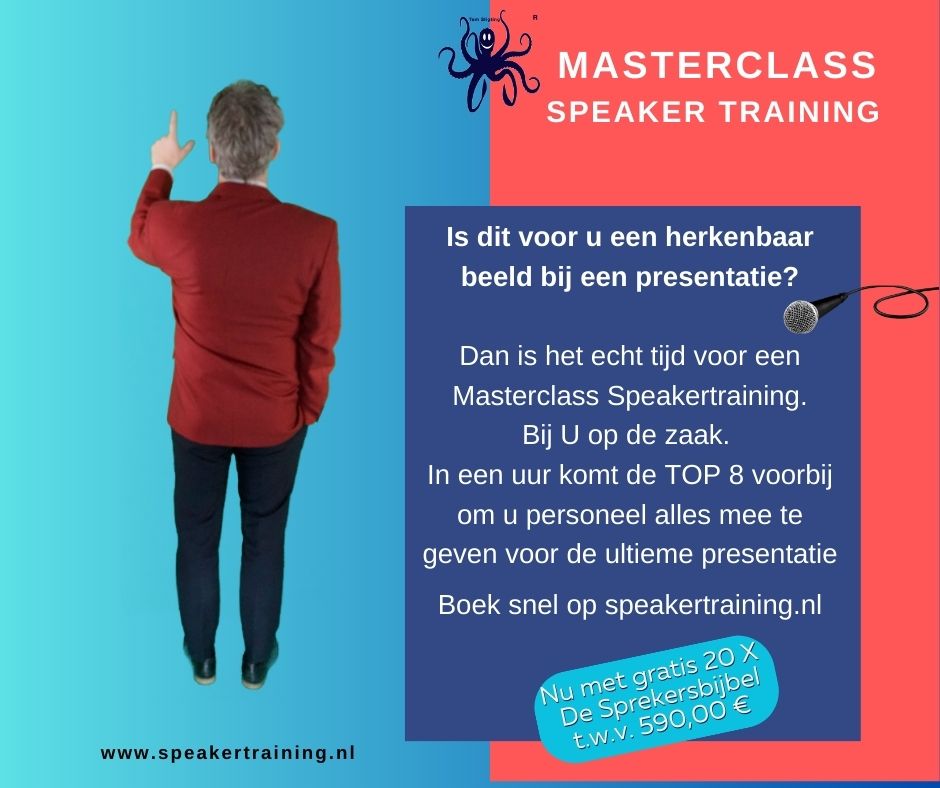
De Masterclass is exclusief te boeken via Showbird.
Een platform waar ik veel zaken mee doe. Dat is veilig, betrouwbaar en transparant. Daar kunt u ook zien dat ik een vijf sterren status heb met schitterende referenties.
Na de Masterclass Speakertraining krijgen alle deelnemers gratis toegang voor de online cursus om alles nog een keer rustig door te nemen in un eigen tijd.
Het totale paket heeft dus:
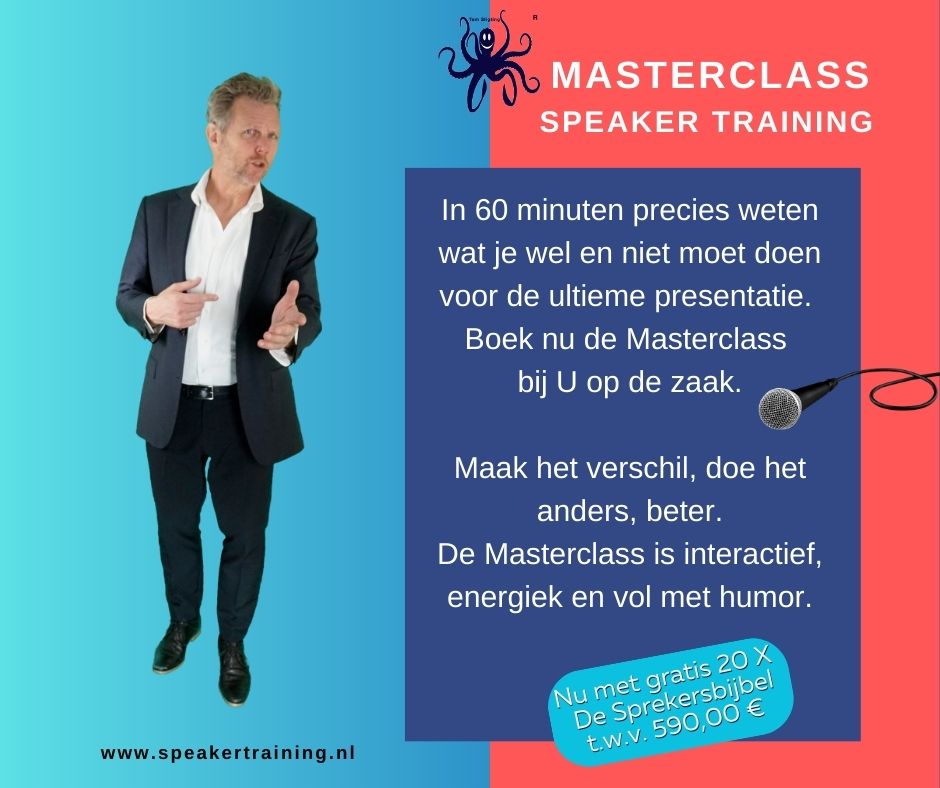
minuten Masterclass
Online lessen
Pagina's De Sprekersbijbel
Hoe dan?
Het is een Full Service Concept. U boekt de training en wordt totaal ontzorgd.

verdieping
Na de Masterclass krijgt u 20 exemplaren van het boek De Sprekersbijbel erbij, ter waarde van 590,00 €. Uiteraard is het mogelijke om meerdere exemplaren voor alle deelnemers te ontvangen. Vraagt u naar de speciale aanbieding. Zodat u gasten deze zomer nog alles kunnen nalezen en verfijnen.
U krijgt er ook voor alle deelnemers een coupon code om GRATIS een de onlinetraining in te kunnen zien. Met meer dan 90 lessen (video – tekst – cartoon)
De Sprekersbijbel
De basis van de training is het boek De Sprekersbijbel wat Tom Sligting geschreven heeft. Dit schitterende hardcover boek heeft alles in zich voor de ultieme presentatie. Met schitterende reviews en fraaie testimonials.
Als u de Masterclass boekt krijgt u een doos met 20 exemplaren er gratis bij, ter waarde van 590,00 €
Heeft u meer boeken nodig, vraagt u dan naar de special aanbieding.
Wilt u van tevoren het boek ontvangen? Neem contact op, dat sturen we er een naar u toe.

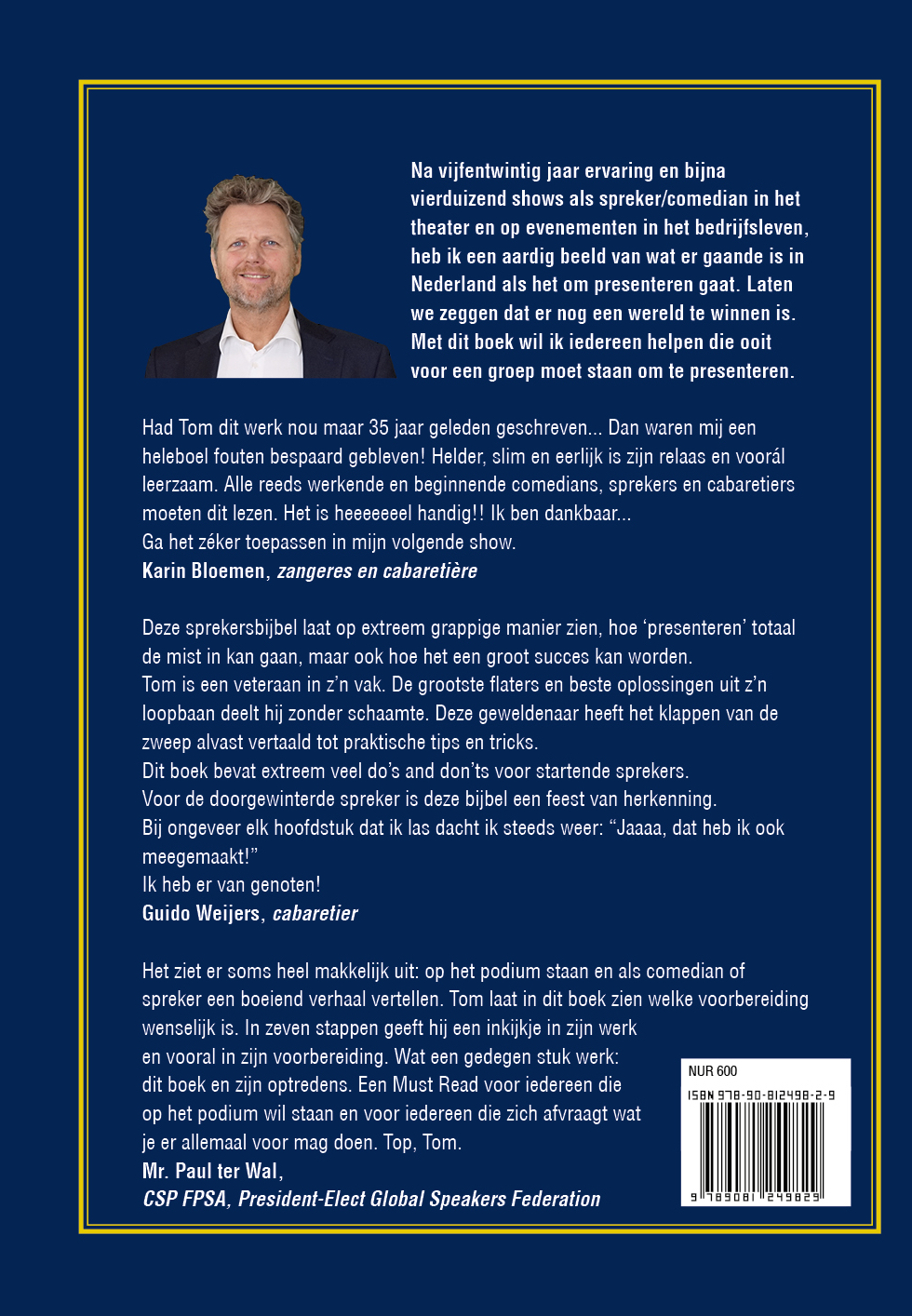
Heeft u een vraag? > Neem contact op:
Testimonials
Na het bijwonen van een Power Talk kan ik vol vertrouwen zeggen dat deze training de meest effectieve is geweest die ik ooit heb ontvangen. Van de beginner tot de expert in spreken in het openbaar, iedereen vond wat hij zocht.
F. van den Brink – PO
De Power Talk van Tom Sligting was dynamisch en boeiend en motiveerde ons om buiten onze comfortzone te denken en actie te ondernemen om betere communicatoren te worden. Ik raad het ten zeerste aan aan iedereen die zijn spreken in het openbaar wil verbeteren.
Chantal Vreeswijk
We waren in staat om waardevolle lessen te leren over spreken in het openbaar en leiderschap, terwijl we de moed vonden om zelfverzekerd te spreken. Als je op zoek bent naar een interactieve manier om jezelf bij te scholen om een zelfverzekerde spreker te worden, dan raad ik de Power Talk ten zeerste aan!
Karin Balk